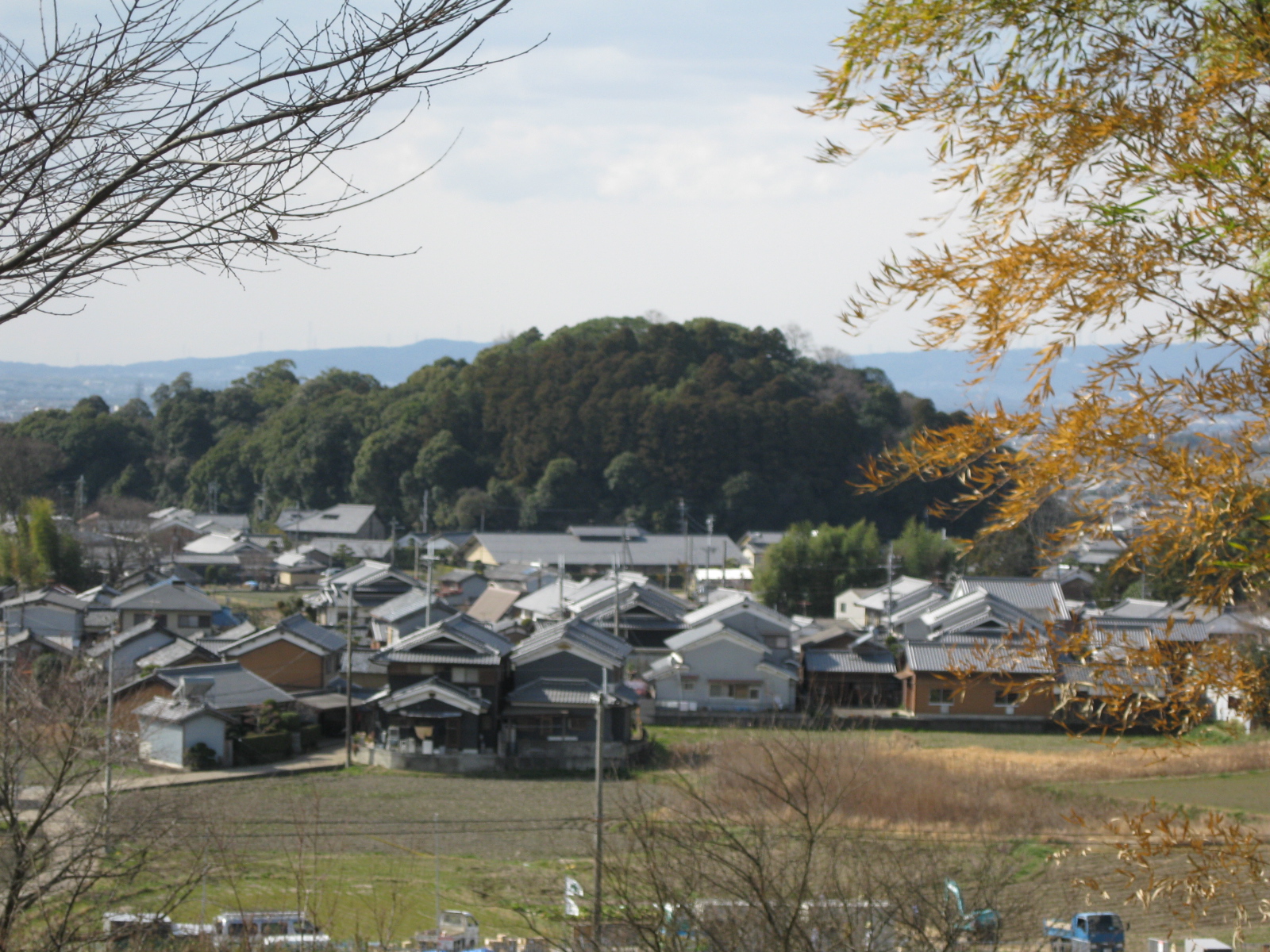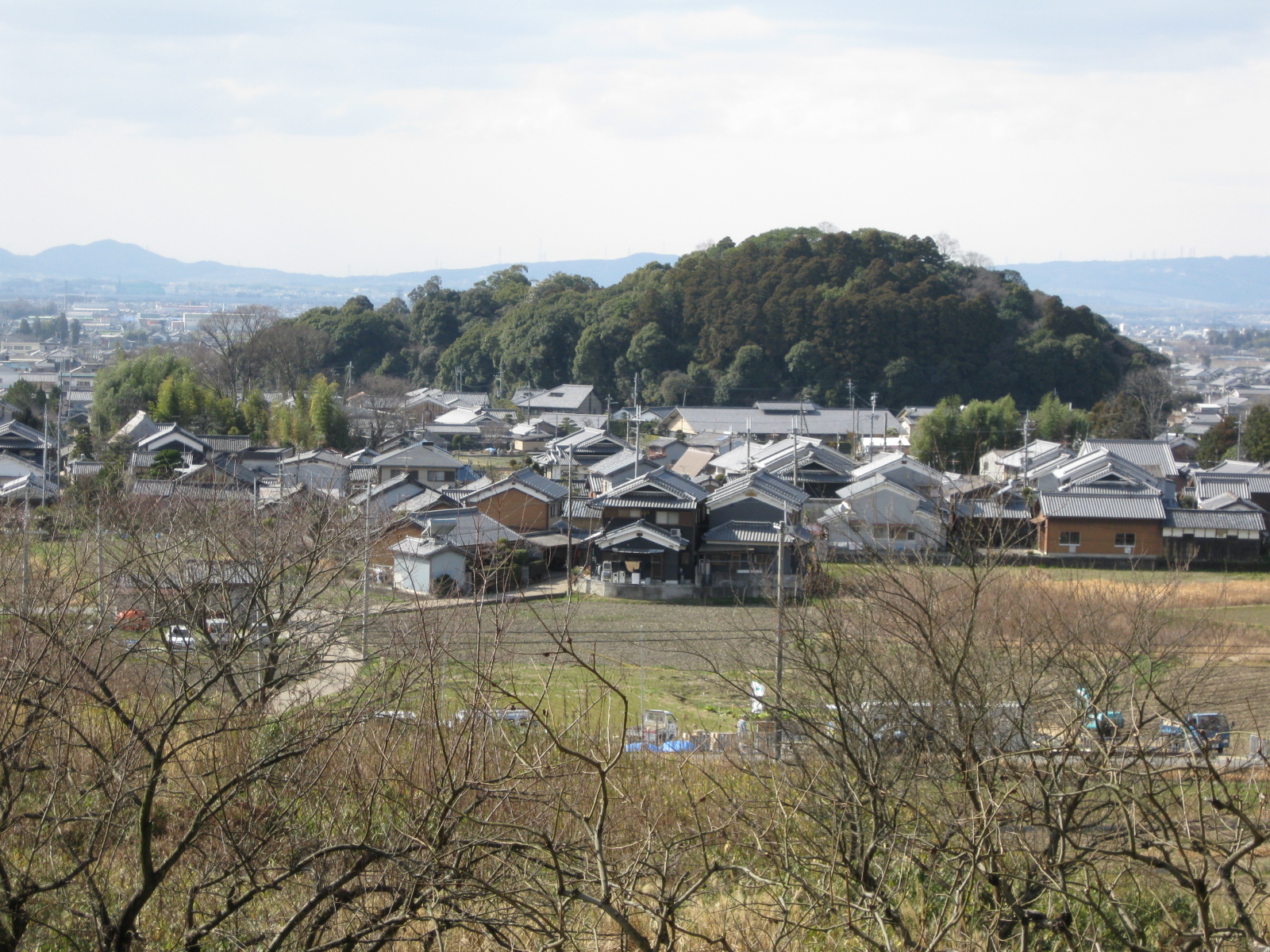
Ancient burial mounds are found all around Kansai, though like this one near Sakurai known as Hashihaka it’s often unclear as to who exactly is buried there.
The scholar Takagi Hiroshi writes that: “After the Meiji Restoration, an idea of the everlasting and unbroken single line of emperors was created, and at the same time, closely related to that idea, imperial mausoleums were invented anew. The latter functioned as a mythical device to enable the continuation of the modern imperial system, by visualizing the single line from the myth of Amaterasu’s grandson’s descending from heaven to earth, through all the emperors in history to the current one.” (Kindai tennō-sei to koto, p.177)
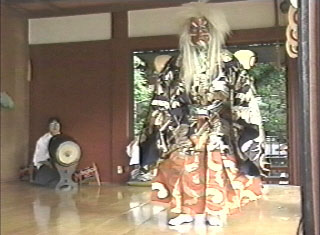
Kagura theatre featuring Ninigi no mikoto
Already before the Meiji Restoration, a grave for legendary Emperor Jimmu had been located in 1863, though historians doubt any such person existed. After the Restoration in 1874, even more astonishingly the burial sites of the three semi-divine generations prior to Jimmu were said to have been identified – that of Ninigi, who according to myth descended from heaven, together with his son and grandson.
Subsequently mounds were specified for many other emperors, such as the thirty-second emperor Sushun (in 1876), for the thirty-ninth emperor Kōbun (1877), the second emperor Suizei (1878), and the fiftieth emperor Kanmu (1880). In 1878, the administration of the burial mounds was transferred from the Home Ministry to the Imperial Household Ministry.
When the latter issued the list of the imperial mausoleums in 1880, the list stated that tombs of thirteen emperors were not identified, but nine years later before the promulgation of the Constitution of the Empire of Japan in 1889 the whole long list of imperial ancestors had been identified except for one, that of the ninety-eighth emperor Chōkei. Because of the lack of historical sources, it was difficult to specify his tomb, though there were many candidates. Finally in 1944 during the midst of the war, it was decided to clear up the issue by settling on a site in Kyoto.
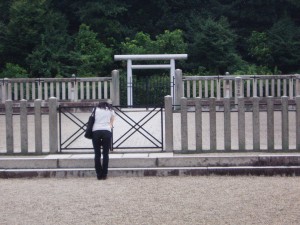
Kammu’s tomb was ‘discovered’ in 1880 and is now part of Kyoto’s kami presence
Post World War Two
After World War II, the Imperial Household Ministry was restructured as the Imperial Household Agency, which now has management and control of imperial mausoleums. On the basis of ‘preservation of sacred sites’, free scholarly investigation of burial mounds is banned, for as ancestral tombs they are held to be inviolable. Remarkably, the Agency has designated no fewer than 895 sites from Yamagata to Kagoshima as imperial mausoleums and tombs, meaning that they are all off-limits to archaeologists. (188 burial mounds are designated as senior members of the Imperial family.) It has given rise to the often voiced suspicion that the authorities are frightened of finding the graves reveal Korean ties, which would confirm the provenance of the imperial family. (Scroll down to the bottom of this page for more about this.)
Recently a World Heritage nomination was made for the “Ancient Tumulus Cluster in Mozu-Furuichi”, which may shed an interesting light on the problem, for a number of imperial mausoleums are included in the application. Which side of the argument will Unesco favour?
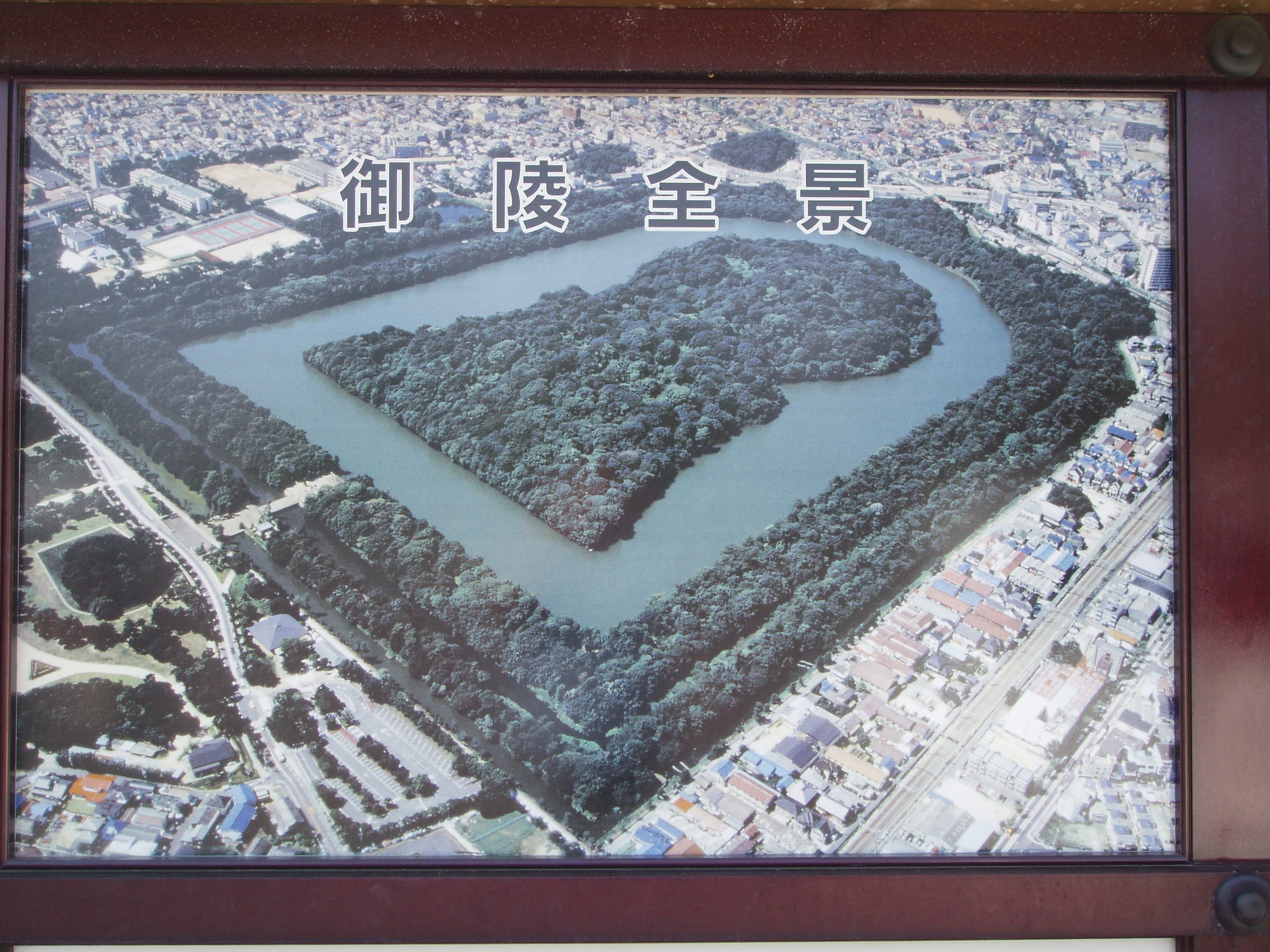
Daisen mound, also known as Nintoku’s tomb, at Sakai near Osaka. It’s the largest burial mound in Japan, and the largest in terms of ground size in the world. (Photo courtesy Japan Times)
Previously the organisation has shown great sympathy with Shinto traditions in accepting the men-only rule for the Ōmine Shugendo site, allowing Shimogamo Shrine to cut down part of its ancient woodland, and agreeing to a ban on entry to the sacred island of Okinoshima (part of Munakata Taisha).
A major item in the World Heritage application is the so-called Nintoku’s tomb, one of the three largest in the world together with the Great Pyramid in Egypt and the Mausoleum of the First Qin Emperor in China (Nintoku’s is the largest if measured by surface area alone).
Nintoku was the 16th emperor in the official line of succession, thought to have died in the early fifth century. According to Wikipedia, “Built in the middle of the 5th century by an estimated 2,000 men working daily for almost 16 years, the Nintoku tumulus, at 486 meters long and with a mound 35 meters high, is twice as long as the base of the famous Great Pyramid of Pharaoh Khufu (Cheops) in Giza.”
Archaeologists however disagree with the attribution to Nintoku from the evidence that is available and refer to it instead as the Daisen Mound (c.400). In fact, the Boston Museum of Arts holds artifacts excavated from the site after a storm. It’s certainly one of the wonders of the world, and walking around its immense perimeter makes one aware of the size, though sadly part of the route is swallowed up by urban sprawl.
When imperial myth comes up against archaeological research, I wonder which side Unesco will choose. Will the Imperial Household Agency still be allowed to put up signs advertising the mound as Nintoku’s tomb? Or will it get the more correct and objective appellation of Daisen Mound?
It is difficult to know what pressure will be applied behind the scenes by Japan, whose financial contributions have been well rewarded in recent years by a steady stream of new World Heritage Sites. Like the issue of whaling, there is often more at stake than what is evident on the surface. At the core of both these contentious matters is a deep concern about Japan’s heritage and its sense of identity.
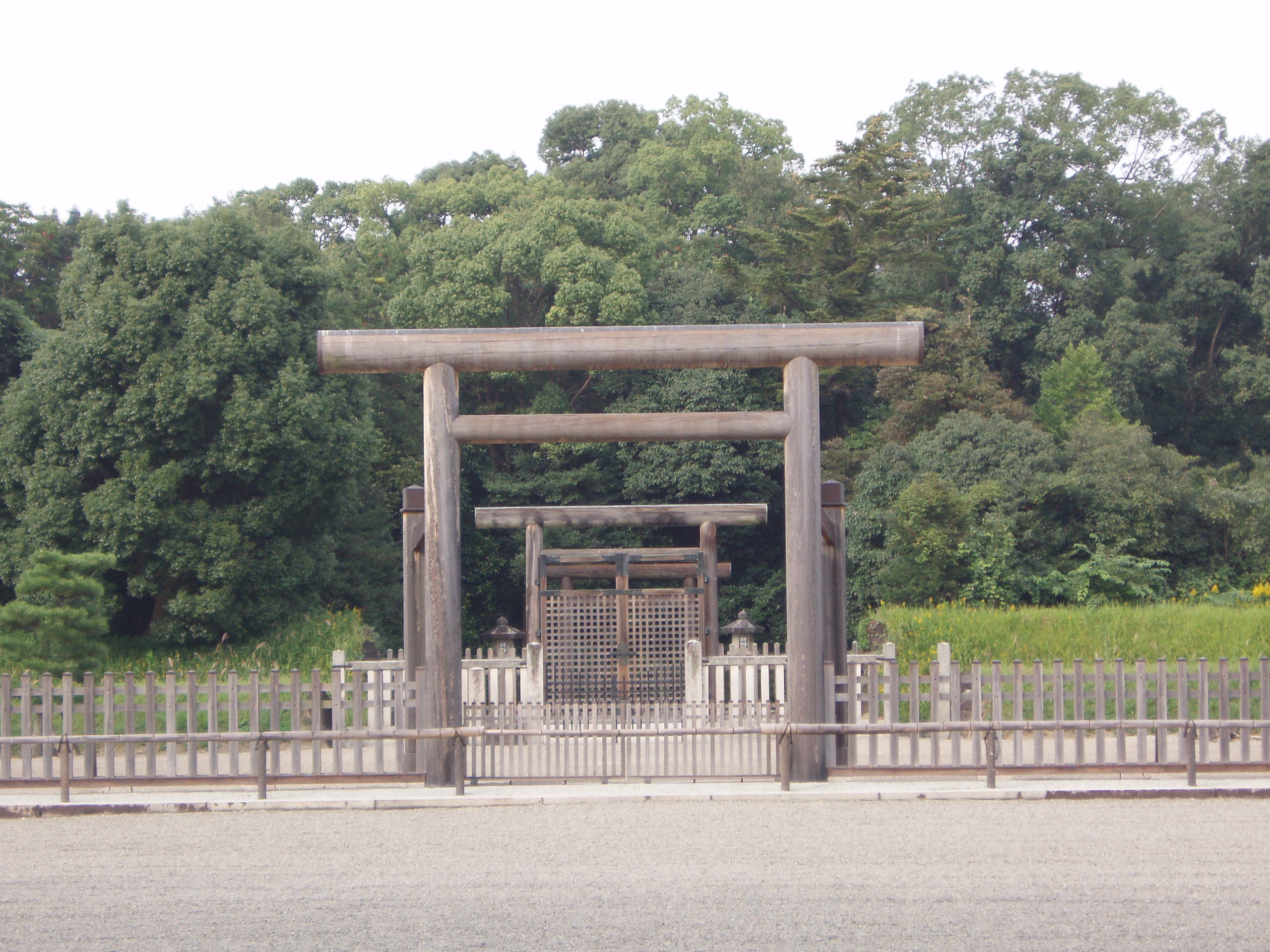
Entrance to the ‘Nintoku burial mound’ in Sakai, Osaka, considered the third biggest burial site in the world after the Great Pyramid in Egypt and the tomb of Emperor Qin in China.
**************
For the official World Heritage application, see here.
For an article about the possible controversy that may arise in the World Heritage application, see this piece by Eric Johnston in the Japan Times.
Thanks to Green Shinto reader John Hallam for pointing out this interesting comment from the Japanese Archaeology website, on the Kofun Culture page:
“There is a myth around that this refusal is because the Imperial Household Agency, and thus the emperor and his family, will discover that the Japanese imperial line is Korean in origin. But the fact that some of the Great Clans around the imperial line and providing wives and mothers for the emperors were descendents from Korean immigrants is clear in the Nihon Shoki and has never been censored from the history books. And there are a lot of people in Japan and in the world who would refuse to let archaeologists or anyone else dig up the graves of their ancestors, especially in a country where none of the archaeological organizations has a code of ethics.
However, the facts are much more complicated that this. The Imperial Household Agency has been doing some excavation work on the designated tombs, in conjunction with maintenance work, and recently they have let a select few archaeologists join in the work. And some tombs designated as imperial tombs have been excavated in the past. Nintoku’s tomb is one of these.
There also are major problems with the designation of kofun mound tombs as imperial tombs. During the period of mound tomb building, no one kept records of who was buried in which tombs. When the first histories of Japan were compiled in the early 8th century, the memory of these tombs was already lost and the writers had to guess. Then nothing more was done for over 1,000 years, until efforts were made in the late Edo and early Meiji periods to determine which mounds were imperial tombs. Some of these designations are now known to be wrong and a large portion of the others are suspect.
If archaeologists have not already accidently excavated an imperial tomb, sooner or later they will, unless all kofun mound tombs are investigated and far more reliable designations of the imperial tombs are made. In fact, only 2 of the mound tombs are generally agreed to be designated correctly, the tombs of Emperor Temmu and Tenji.”


